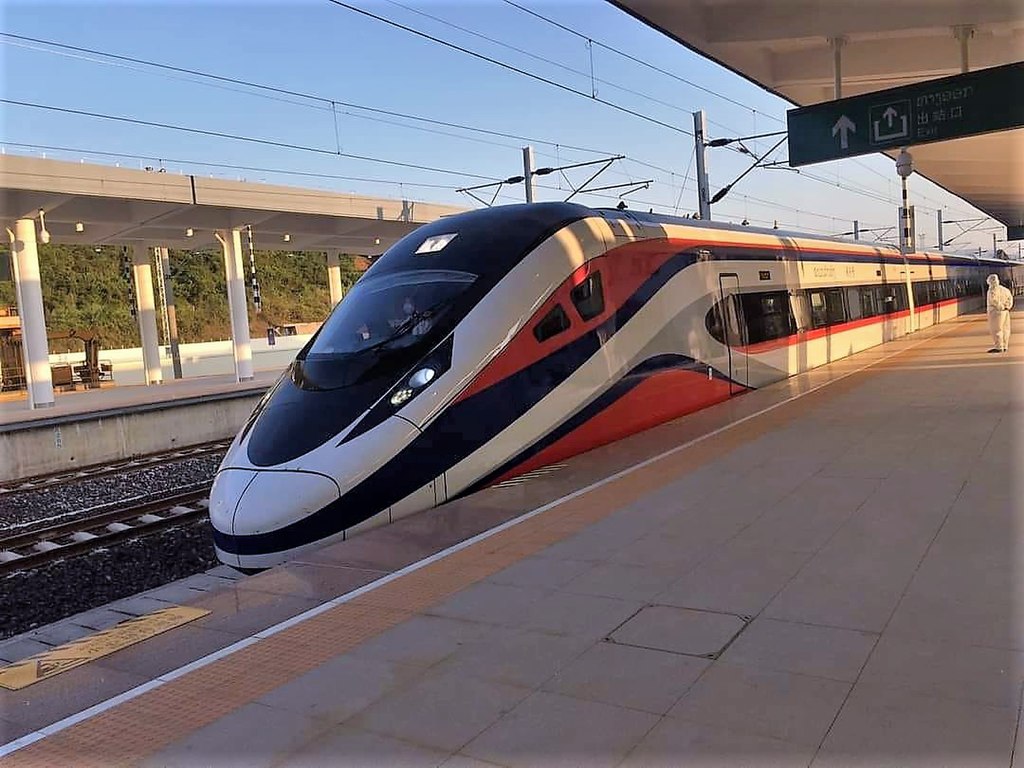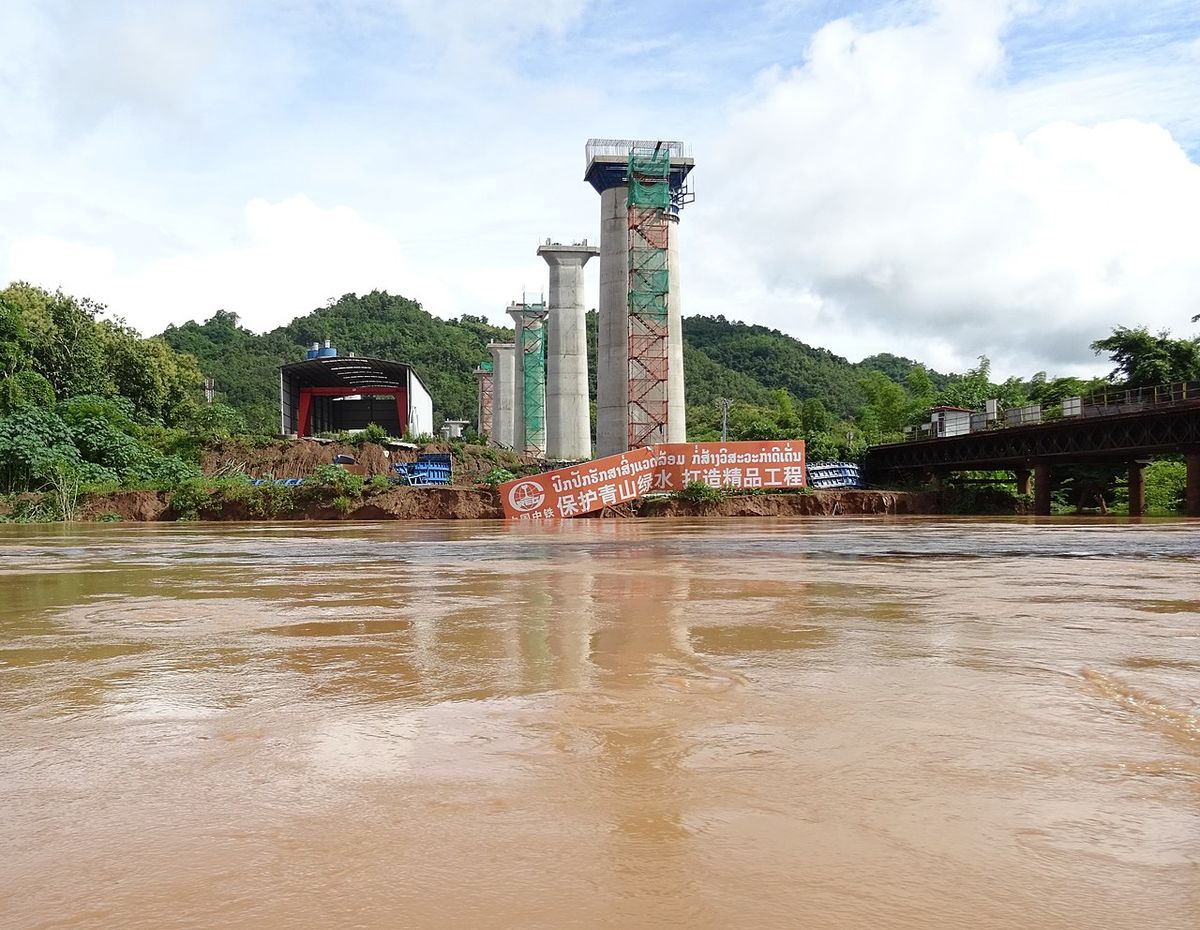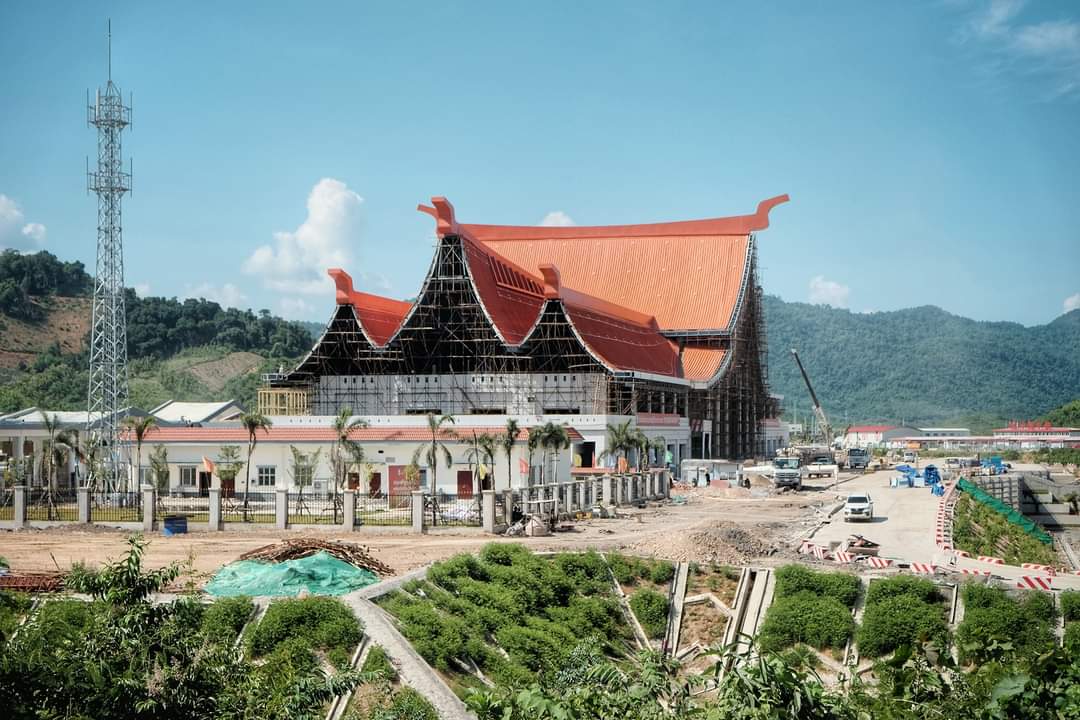Vientiane, Laos —(Map)
Last Friday, the first train took off on a new $6 billion railway in Laos. The government hopes the system will help improve the situation for the country’s businesses and people. But many people question whether Laos can afford the railway.
After five years of building, the new high-speed railway was finally opened on Friday. Laos President Thongloun Sisoulith and Chinese President Xi Jinping spoke over a video connection at an opening ceremony. After a Buddhist blessing, the first train took off, carrying the country’s prime minister, Phankham Viphavanh.
😕
This image has not been loaded because of your cookie choices. To view the content, you can accept 'Non-necessary' cookies.
After five years of building, the new high-speed railway linking Laos with China was finally opened on Friday. Laos President Thongloun Sisoulith (left) and Chinese President Xi Jinping (right) spoke over a video connection at an opening ceremony (above).
The 257-mile (414-kilometer) line runs from the country’s capital, Vientiane, in the south up to the border with China. There, it connects with rail lines to Kunming, a large city in the south of China.
The project is a huge step forward for the country, which only had 2.5 miles (4 kilometers) of rail lines before this. The train has a top speed of about 100 mph (160 kph) and will make travel times inside the country much faster. For example, the four-hour trip by bus from Vientiane to the popular tourist spot Vang Vieng can now be done in an hour by train.

(Source: Embassy of Timor-Leste in Vientiane [Public domain], via Wikimedia Commons.)
But it’s mainly the connection to China that has the government excited. Laos is the only country in southeast Asia with no connection to the sea. Being able to send products quickly to and from China will make it much easier for Laos to do business with other countries.
It will also make it far easier for Chinese tourists to visit. Laos is eager for visitors. There hasn’t been much money coming into the country recently because of the coronavirus pandemic.
The new railway is part of a huge effort by China known as its “Belt and Road” project. Under this project, China is loaning large amounts of money to poorer countries for building projects like dams and roads. The poorer countries are often left owing China huge amounts of money.

(Source: Christophe95 [CC BY-SA 4.0], via Wikimedia Commons.)
The loans help build large projects that the countries need, but they also help China. The projects provide lots of opportunities for Chinese businesses and workers. The loans also give China increased power in other countries. Countries which depend on China are less likely to go against it in other areas, such as disagreements at the United Nations.
Many people wonder whether Laos can afford the railway. Laos already owes billions of dollars, and the country borrowed another $1.54 billion for the railway. Some experts say it’s unlikely that the railway will make enough money to cover the loans.

(Source: Pakopakopapa, [CC BY-SA 4.0], via Wikimedia Commons.)
Others question how much the railway will help most people in Laos, where two-thirds of the people live in farming villages. Many people in Laos earn about $116 a month, and aren’t likely to buy $13 tickets to ride the train.
The railway has already cost some Laotians in other ways. Around 4,400 families were forced off their property in order to build the railroad. Many of those people had to wait a long time to be paid for the land they lost. Some feel like they weren’t paid enough.
Did You Know…?
China is hard at work to make the railway even longer. In the future the railway is expected to extend through Thailand and Malaysia all the way down to Singapore.
😕
This map has not been loaded because of your cookie choices. To view the content, you can accept 'Non-necessary' cookies.
